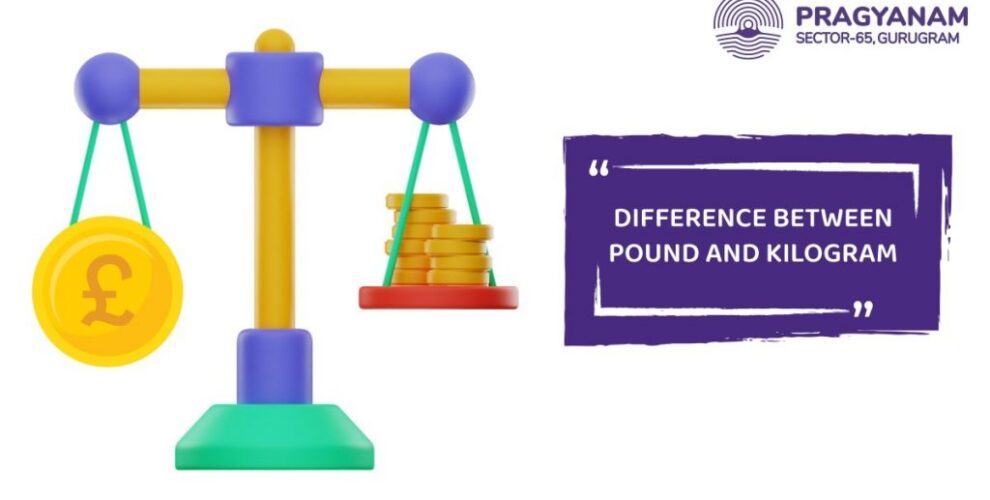Have you ever assessed your weight on a scale and wished it were a few kilograms lighter or heavier? Perhaps, you’ve experienced the delightful surprise of a friend presenting you with a delectable pound cake on your birthday. If you’ve pondered the rationale behind the utilization of different units of measurement, specifically the distinction between pounds and kilograms, and if you’re curious about how to convert one to the other, then continue reading.
Before delving into the dissimilarities between pounds and kilograms, it is essential to clarify that both are units of measurement, specifically for quantifying weight. In the realm of science, units serve as established references that enable the definition of the magnitude of a quantity. Undoubtedly, the significance of units cannot be overstated. It goes without saying that a measurement lacks meaningful context without a unit, as there is no reference point to comprehend its magnitude. In essence, the use of standard units serves the purpose of:
– Accurate measurement of quantity.
– Standardisation, so that people are able to convey the measurement accurately.
In ancient times, measurement systems were locally defined, leading to diverse and subjective standards. Consider this scenario – measurements based on the length of a king’s thumb or the size of the Eiffel Tower. Alternatively, one might gauge the weight of an object in comparison to the water in a jug of a specific size, and so forth. The challenges and inconsistency inherent in such units are easily imaginable. Consequently, more uniform and standardized systems of measurement gradually emerged over time.
Historical Tidbit:
- The establishment of standardized units of measurement in England traces back to the Weights and Measures Act of 1824. Prior to this legislation, standardization was dictated by royal decree. Examples include:
- Edward II specifying the inch as equivalent to the length of 3 barley corns.
- Henry I, proclaiming that one yard equals the distance from the tip of his nose to the end of his outstretched thumb.
Table of Contents
Common systems of Measurement
Let us look at the common units of measurement which are in use:
The Metric system
During the French Revolution (1789–1799), the French Academy came up with a standard. In this system the following units were defined:
- the unit of length – metre
- the unit of mass – gram
- The unit of time- second. The calendar consisted of 12 months of 30 days each. Each day was divided into 10 hours, 100 minutes per hour and 100 seconds per minute.
The metric system was adopted by the National Assembly on 7 April 1795. In 1875, 17 countries signed the Treaty of the Metre. By 1900, 35 countries officially adopted the metric system.
International System of Units
The international System of Units (SI) is the modern form of the metric system and comprises seven base units. SI is the most widely used system of measurement.
The SI base units are as below:
SI base units:
- Ampere – unit of electric current
- Kelvin – unit of temperature
- Second – unit of time
- Meter – unit of length
- Kilogram – unit of mass
- Candela – unit of luminous intensity
- Mole – unit reflecting amount of a substance
United States customary units
As its name suggests, United States customary units (UCS) is a system of measurements used in the United States. While UCS is primarily used for commercial, social, and personal applications, the International System of Units (SI) is used in the US in areas such as science, medicine, industry, the government, and the military.
Let us look at the units in use as per the UCS system:
Units of length:
The US customary units that are in everyday use are as below:
- Inch
- Foor
- Yard
- Mile
Units of weight and mass:
The USC units of mass are:
- Ounce
- Pound
- Ton
- Long Ton
Difference between Pound and Kilogram
The various systems of units and their importance established, let us get to our original question- the difference between Pound and Kilogram.
What is Pound?
Pound is defined as a unit of measurement of weight which is approximately equal to 454 grams. The pound is divided into 16 avoirdupois units.
The pound is represented by the symbol ‘lb’.
What is Kilogram?
The kilogram is the S.I unit of mass. It is defined as the mass of a cylinder whose height is equal to its diameter, made of Platinum- Iridium alloy, which is kept in the International Bureau of Weights and Measures laboratory at Sèvers, France.
It is represented by the symbol ‘kg’.
Difference between Pound and Kilogram
Some main differences between pound and kilogram are as below.
- They measure mass in different measurement systems.
- The pound is represented by the symbol “lb”, while the Kilogram has the symbol “Kg”.
- A Pound is equal to 454 grams while a Kilogram is approximately equal to 2.2 pounds.
Conversion of Pound to Kilogram
Pound and Kilogram can be converted from one to the other. The mathematical formula for the same is as below:
X Pounds ——————- = Y Kilograms
Let us take an example.
If you need to convert 50 pounds to kilograms, you simply need to divide 50 by 2.2046. In other words, 50 pounds is equal to 22.67 Kgs.
Conversion of Kilogram to Pound
Y KG x 2.2046 = X Pound
Let us take an example:
If you need to convert 75 Kilograms to Pounds, all you need to do is to multiply 75 with 2.2046. 75 Kilograms will therefore mean 165.34 Pounds.
Here’s hoping this blog post piques your curiosity enough for you to learn more about different units of measurement. For more such informative blog posts keep watching this space. At Pragyanam, one of the best CBSE schools in Gurgaon, we work towards inspiring a love for learning in our students, so they remain learners for life.






Leave a Reply